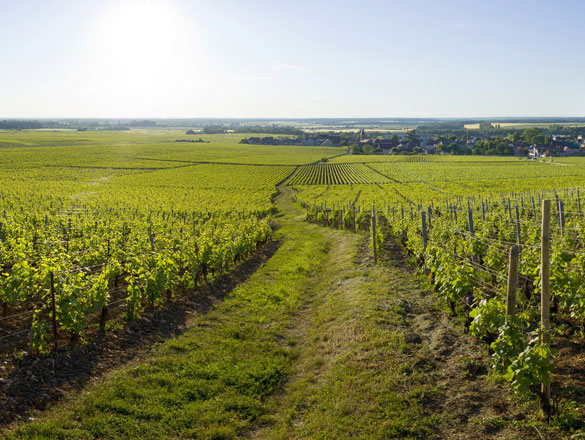
The vineyards of Bourgogne produce some great wines with a historical and international reputation. However, the region is not simply limited to its iconic appellations. In addition to its Village Premier Cru and Grand Cru AOCs, it also produces a range of wonderful Régionale and Village appellations to explore.
You will also find a full list of the Bourgogne’s Climats and lieux-dits on this page.
Check out the complete list of the 84 Bourgogne appellations.
However, your exploration has only just begun. Bourgogne wines have never before offered such high quality. Besides our range of internationally celebrated wines, try some of our lesser-known appellations where there are lots of surprises in store.
And for a fun way to find out more about the wines on offer, try out our “Which Bourgogne wine is right for me?” quiz, or check out Bourgogne Maps to take an interactive tour of the region.
Grand Cru appellation
VIGNOBLE DE LA CÔTE DE NUITS
11 septembre 1936
Exclusively reds - Pinot Noir
Area under production*:
1 hectare (ha) = 10,000 m2 = 24 ouvrées.
LA ROMANÉE: 0.84 ha.
* in 2018
Appellations Grands Crus of the Côte de Nuits region (Côte-d’Or).
Producing commune: Vosne-Romanée.
On the label, the words GRAND CRU must appear immediately below the name of any of the above appellation in letters of exactly the same size.

These red Grands Crus frequently give good results from long laying-down.
As a general rule, they shouldn’t be drunk under about ten years of age but sometimes they will be aged up to 20 or 30 years. Each appellation has its own distinct personality depending on its year of production and on the stage it has reached in its development. These flamboyant red wines fully express the subtlety and complexity of the Burgundian Pinot Noir grape.
Their colour is a dark ruby turning crimson with age. Their wide-ranging bouquet is divided among small red and black fruits, violet, spices and, with time, underbrush. On the palate, this wine is well-defined with a powerful body. It is delicate, sensual, frank and full.

In addition to their powerful structure and exceptional longevity, these great wines develop tertiary aromas of truffle, underbrush, leather and fur. It goes without saying that strong-flavoured meats will do them justice: furred or feathered game, braised, in sauce, or simply grilled. Wild-fowl (eg Peking duck) or a nice cut of roast veal will be gently enveloped by the close-packed but elegant tannins of these mighty Pinot Noir wines.
Serving temperatures: 15 to 16°C.

In addition to their powerful structure and exceptional longevity, these great wines develop tertiary aromas of truffle, underbrush, leather and fur. It goes without saying that strong-flavoured meats will do them justice: furred or feathered game, braised, in sauce, or simply grilled. Wild-fowl (eg Peking duck) or a nice cut of roast veal will be gently enveloped by the close-packed but elegant tannins of these mighty Pinot Noir wines.
Serving temperatures: 15 to 16°C.
One of these vineyards takes its name from Prince Conti who lost his heart to it in 1760. Romanée-Conti is one of the wonders of the world and has always been a singly-held entity. Next door to it, Romanée-Saint-Vivant recalls the medieval monastery of the Hautes-Côtes which is currently undergoing restoration and which is linked to it by its own path. La Romanée, La Tâche and La Grande Rue are also singly-held entities, as is Richebourg, whose mere name is enough to fill a glass.

Romanée-Conti lies on brown limestone soils 60 cm deep with a major clay component. Romanée-Saint-Vivant has similar but deeper (90 cm) soils. Higher up, La Romanée occupies a markedly sloping site (12%) and the soil texture is less clayey. La Tâche and La Grande Rue share brown limestone soils, rather shallow at the top end with deeper rendzinas lower down. The same is true for the Richebourg, depending on slope and aspect. The underlying rock is hard Premeaux limestone dating from the Jurassic (175 million years BC).
